Driving down the Coromandel Coast – 2

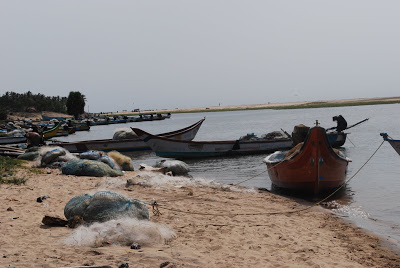
We had paused in our journey from Chennai to Tranquebar at Sadras in Part 1. Part 2 continues as we drive towards Pondicherry . . Join us as we resume the journey again and take you down to the coast.
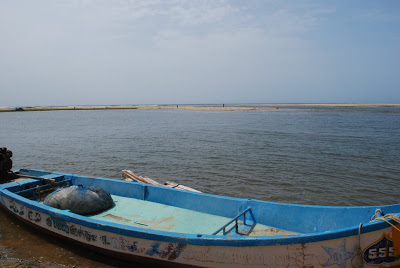
As the past merges with the present, we are driving into another time zone. Bordered by coconut trees, the backwaters looks inviting. A few boats lie scattered. We take a detour from the village of Kadapakkam and enter the portals of another port lost amidst the ruins, located right next to the seashore. There is no one in sight. Coconut and palm grooves shelter the broken bricks as the rubbles resonate with the glory of the past .

We are at the 17th century Alamparai fort also called Alampara. Built during the Mughal era it was ruled by the Nawab of Carnatic and was later on gifted to the French for their support. The British eventually destroyed the fort and the dockyard which was more than 100 metres long.
A rusty ASI board gives us more information. Alamparai, it says was the ancient land of Idaikazhunadu, mentioned in the literary work, Siruppanatruppadai. The sea port was used for trade by the Arcot Nawabs and zari , salt and ghee were exported from here. Coins were minted from here as well and later on the mint was shifted to neighbouring Pondicherry. The mint built on a highway near Alamparai here even housed a Shiva temple, a “choultry “ and a pond and was built for the benefit of the travelers coming down this route towards Rameshwaram.

We are unable to find the highway, but the breeze takes us on a different route. A local fisherman offers us a ride in his catamaran. The sky and the sea merge into a vast expanse of blue . We watch him deftly stroke the waves as he entertains us with stories of film crew who have shot many a scene here.
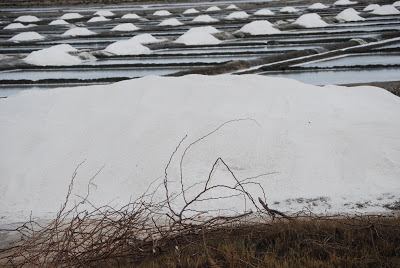
The sun gets kinder as we drive towards what is left of French India in Pondicherry. The smell of the salts however makes us pause at Marrakkanam . The entire stretch is filled with heaps as a group of workers extract the salt. We chat a bit about their day as a couple shyly walks up to us and asks us to photograph them. “ They are getting married,” laughs another woman, while a grumpy man wants money to talk about salt extraction. We take him with a pinch of salt, show the couple the photographs and move on towards the quaint streetscapes of Pondicherry .
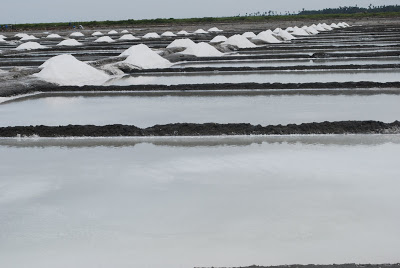
The French connection with Pondicherry is often waxed eloquent by the tourists . But not many speak of the Portuguese , Danish and Dutch who have all laid claim to this port which was another centre of trade . Eventually the French, though defeated by Dutch bought it from them for 16000 pagodas. Pondicherry or Poudoucheri as it was called became the capital of French India. There was a time when Madras was controlled by the French from Pondicherry, says the local policeman with his tall unique hat.We stop at Auroville , grab a quick bite and slip back in time again as we continue our journey.
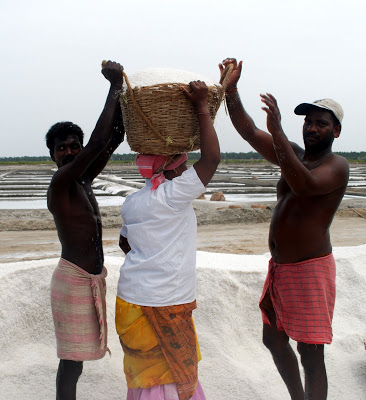

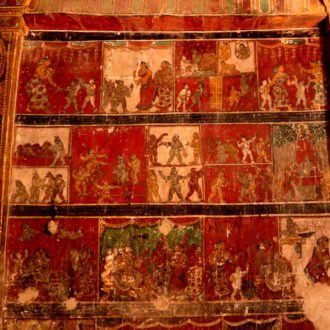
Two things striking about Marrakkanam. The great symmetry in the sizes of the salt heaps; maybe unintended, but very much there. And the salt and pepper contrast in the habits of the folks in the last photo. Particularly the chemistry lab apron worn by the lady amidst a profusion of other clothes, probably unusual for this type of work?
:)The salt pyramids look like they were measured out to perfection!!seen such in Tutucorin decades ago … Have been to alamparai fort ages ago, looking fwd to visiting it again.. Think Preeti went during their trip to Pondy!!
Just fantastic – the pictures as well as the narrative. I was eagerly looking forward to this, and now, to further installments of this series.
Nice and infromative text with beautiful pictures!
Alampara fort is so nice… I didn’t know of this place.. Thanks for this.. 🙂
Chennaraya Perumal Koil at My Travelogue
Looking into the EYES!!! at Savoir-Faire
Workwear Style 3 at Fashion Panache
I have never seen those salt fields till date, hence they look particularly nice to me.
Have been this side of the country so many times, but never got to know about this fort. Thanks for sharing this with us.
And, the pictures are great!!!..as usual…
Wow, the views are amazing!
Thanks for sharing!
Nisrine
Hi Lakshmi! I knew the Poruguese had been there also… centuries ago… 😉
Time to relax with a visit to a museum? Blogtrotter is at the British! Enjoy and have a great holiday season!
I have never traveled down that coast – so I enjoyed the trip with you very much!
so you organising this route as well 😀 think there is a good chance I can come(hopefully no classes or anything) 😀 😀 😀
What a nice place, and what great photographs!
I read on Anu’s blog that you’ve won the Indibloggies Award!! Congratulations!!!
Bhangarh
great pictures of the salt piles. Must have been an interesting trip!
Amazing pictures
Another view of Pondicherry:
http://all-that-we-love.blogspot.com/2011/10/pondi-part-1.html